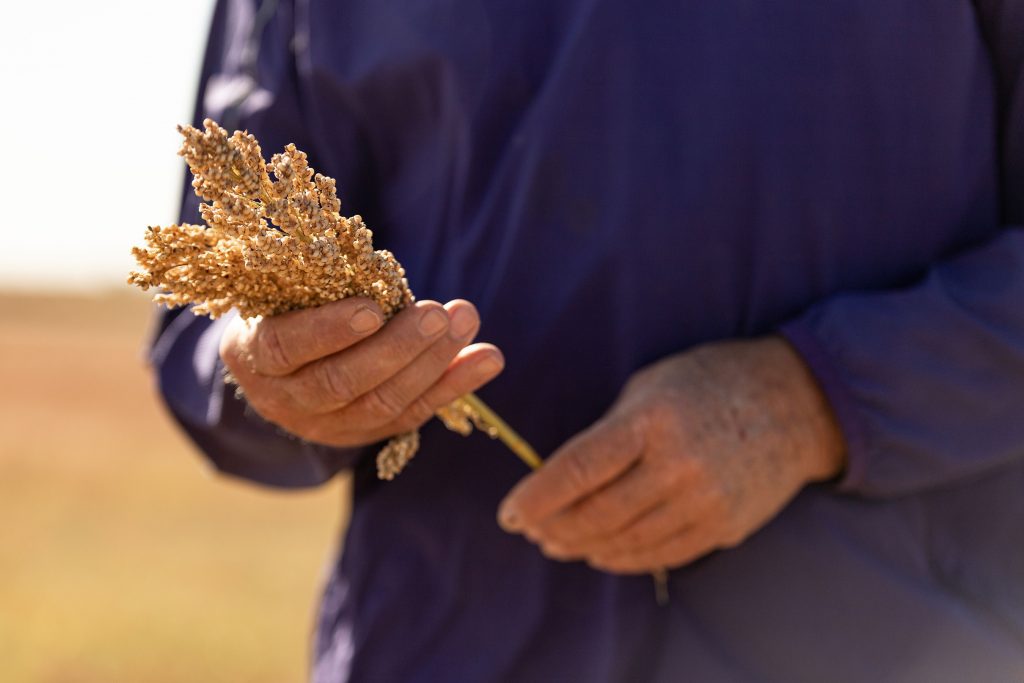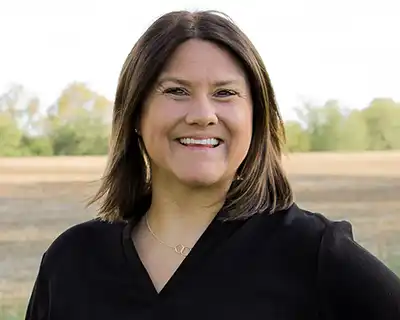
There’s plenty of excitement in regenerative agriculture circles about the environmental potential of new perennial grains under development by organizations such as The Land Institute—and rightly so. Yet a longtime U.S. grain planted to 5.8 million acres in 2020 with a powerful sustainability story too often hasn’t broken into the conversation: Sorghum.
With more manufacturers of food for humans and their pets seeking to source commodities with an environmental story that has wide consumer appeal, this grain is having a moment.
The opportunities are only accelerating.
“Sorghum has so much to offer as a crop to so many of the challenges that we’re facing,” explains Kira Everhart-Valentin, sustainability director, United Sorghum Checkoff Program, who joined the organization in February 2020. “Being a smaller crop, sometimes it is hard to get that message out there as widely as we would like.”
A global sustainability story. Before joining the Sorghum Checkoff, Everhart-Valentin served on a research management team with emphasis on countries in Africa.
Sorghum is a “staple crop there, especially the Sahel region, a semi-arid environment, and in India, China and Mexico.”
One of the crop’s secret weapons is its ability to regulate its own water intake. Although sorghum is grown in 21 U.S. states, 91% of acres are dryland, and they are predominantly found in dry climates such as the High Plains region including Kansas, Texas and Colorado.
“Sorghum is a very water-smart crop,” Everhart-Valentin explains. “You see it grown heavily in places where water is a limiting factor. It has several mechanisms that allow it to slow its growth and conserve and better utilize available water during dry periods. Then it picks back up when it gets a drink. This allows sorghum to survive and produce in times when other crops might fail.
Water conservation partnership is an area of focus for the Sorghum Checkoff given that many acres sit on top of critical groundwater resources such as the Ogallala Aquifer, Everhart-Valentin says.
The deep root system and solid biomass of the sorghum plant also offers soil health benefits. After harvest, each plant’s multiple stalks, called tillers, can be left standing.
“It leaves a lot of cover for ground,” she says. “A lot of people leave it to capture snow in the winter and grab it so it doesn’t blow away.”
That cover also provides important nesting habitat and food for upland birds, which led the Sorghum Checkoff to enter into a long-term partnership with Pheasants Forever and Quail Forever. “It has a role to play as a part of these ecosystems in terms of the nutrition and the cover that it can provide through the seasons,” Everhart-Valentin says.
Focusing on farmer support, building demand. A recent survey led by the Sorghum Checkoff in partnership with a state sorghum association found sorghum producers are enthusiastic about the possibility of adding more conservation to their operations.
That’s an encouraging sign for Everhart-Valentin.
“Growers want to be sustainable,” she points out. “Farmland is a massive asset, potentially passed down through generations. They live and interact with all of these ecosystems. They see the birds, they see the wildlife, they see when things are going well, they see erosion. They want to maintain the health and integrity of their land.”
To help producers take the next step, the Sorghum Checkoff is honing in on conservation practices and programs that check the boxes of both sustainability and economics.
A recent conversation with a farmer underscored the importance of this approach. The producer had worked on a playa lake in western Kansas, a practice that helps recharge the local aquifer by collecting rainwater. The land already flooded in that area and was unproductive, so conservation made economic sense.
“But then afterward,’” the farmer told Everhart-Valentin, “’I look out there and I see these wildlife, ecosystems, and I feel good. Not only did it make sense, but I’m glad I did it. I feel good that I contributed to that and am supporting that.’”
Rather than advocating for specific conservation practices that might not be relevant in all environments, the Sorghum Checkoff emphasizes keeping stewardship in context.
“We really push local growing conditions as being really important,” she says. “We need a big suite of solutions.”
Beyond the farm gate, manufacturers of food for people and pets are engaged in ongoing conversation with the Sorghum Checkoff about ways to use sorghum in products—and take its benefits to consumers.
“The nutritional profile of sorghum is pretty fantastic,” Everhart-Valentin explains. “It’s a really solid argument for utilizing sorghum.”
Additionally, sorghum illustrates how a crop can support rural investment at a time when the Biden administration is emphasizing the role of infrastructure and environmental stewardship to help the livelihoods of farmers and rural Americans.
“It’s supporting communities in areas that are kind of on the edge from a growing environment perspective,” she notes. “It is a dependable, solid crop that helps keep those farms and communities thriving.”



